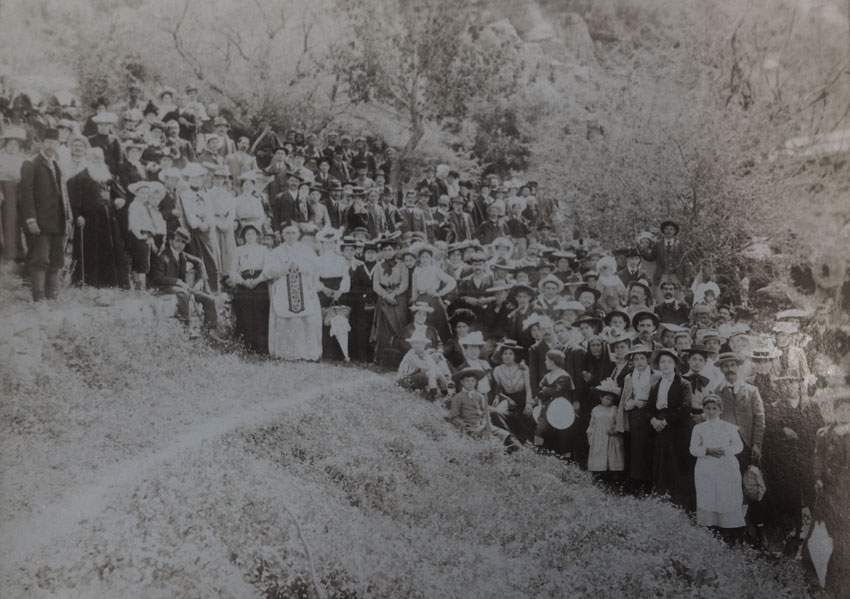 |
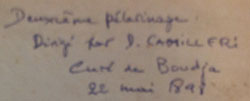 |
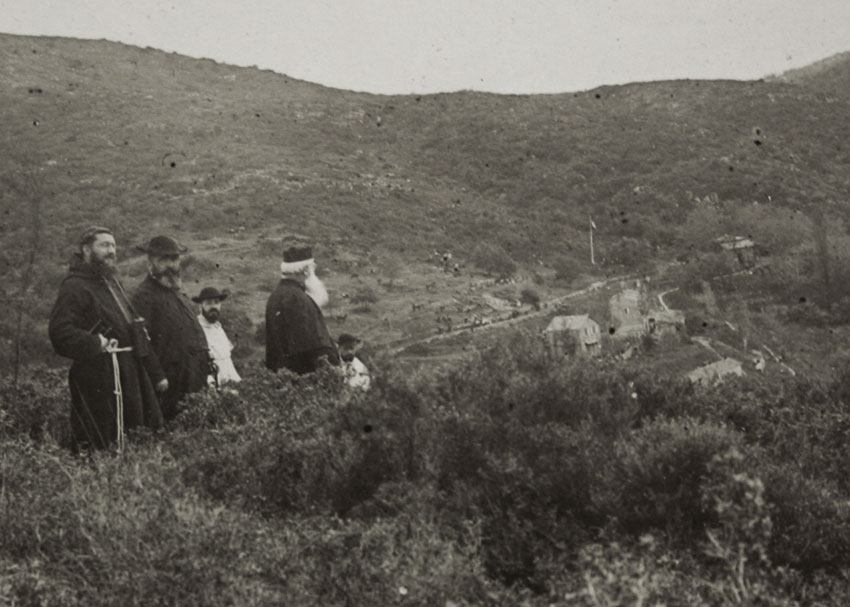 |
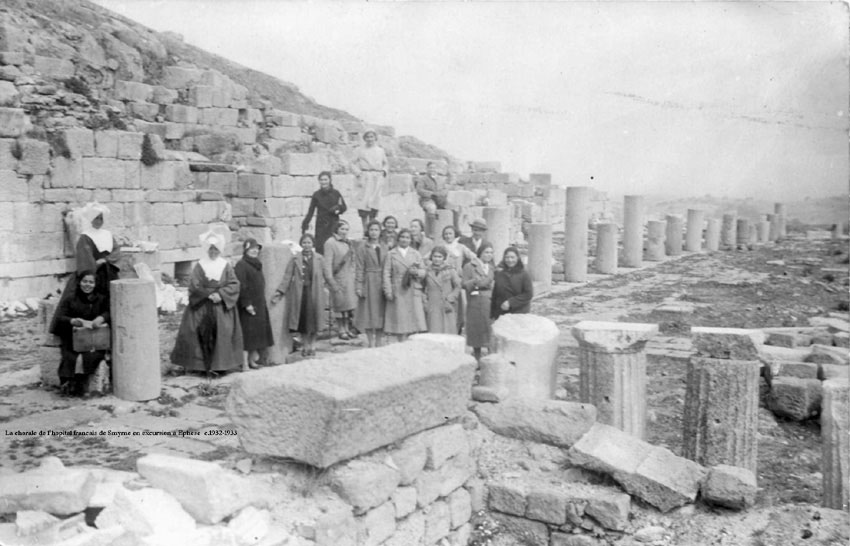 |
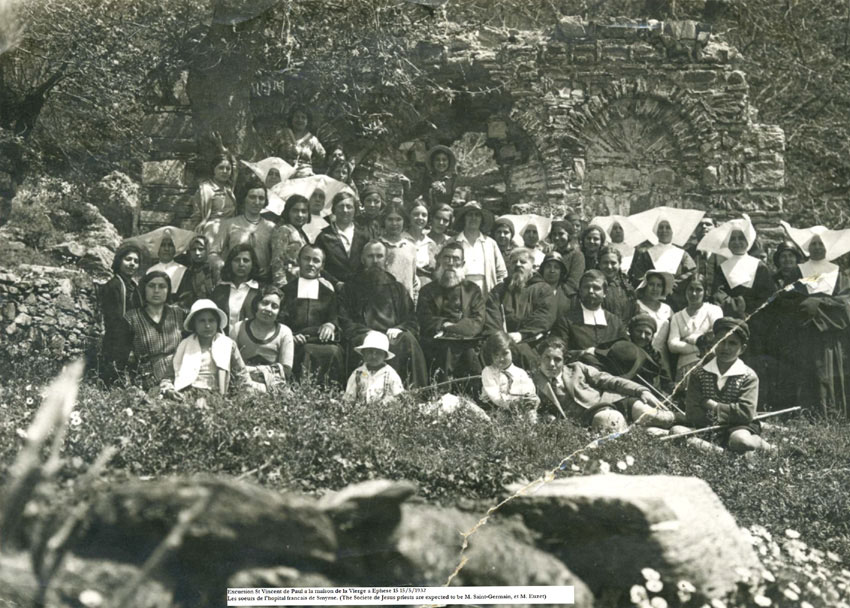 |
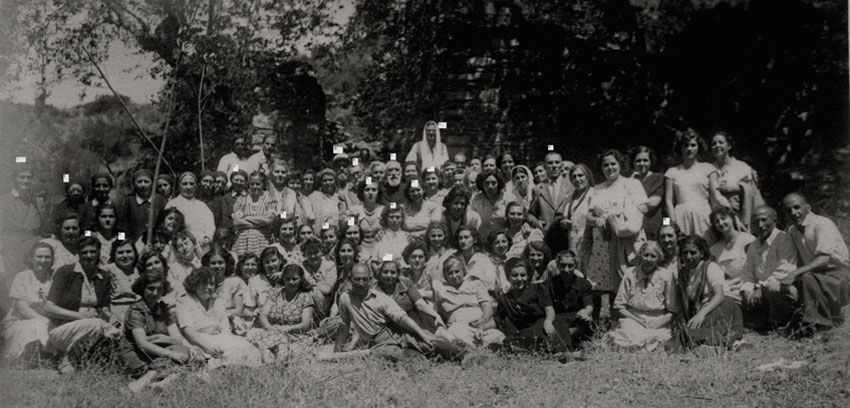 |
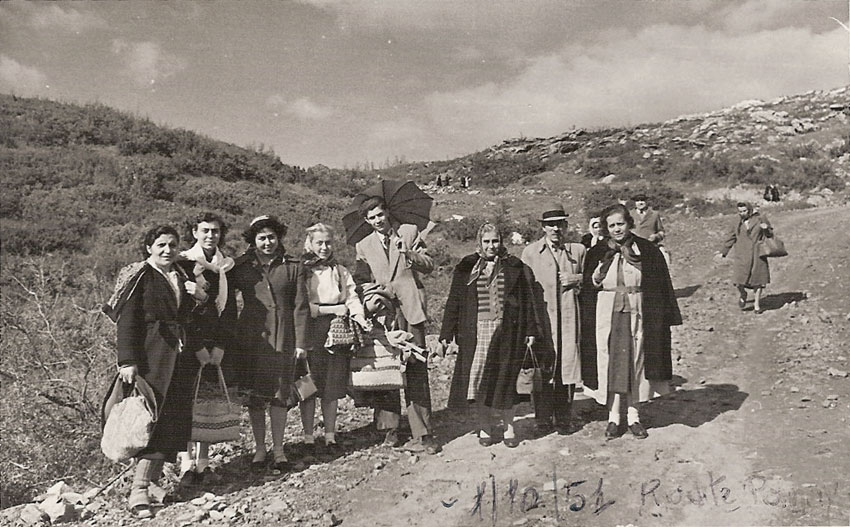 |
More information from Padre Sebastiano Bossina writing in the Catholic journal of Stella di S. Domenico, edition September 1951, here translated into English:
Great pilgrimage to Panaya Capulu - August 19, 1951.
Sunday 19 August will remain memorable in the annals of the Church of Izmir, the only one that remains of the seven Churches of the Apocalypse.
After several years of interruption the pilgrimage to Panaya Kapulu on the hill of Bülbül - Mount of nightingale - where, according to a venerable tradition, the Blessed Virgin Mary would spend the last years of her earthly life in the company of Apostle St. John. John. The memory of the Mother of Jesus was preserved by an ancient and rustic building called ‘Panaya Kapulu’, the house of the holy, very damaged by the insults of time and men. But now, thanks to His Excellency’s initiative, Mons. Joseph Descuffi, the Archbishop of Izmir, it has been radically restored. The initiative (strongly disapproved by most) found not only of moral but also material support by the Turkish authorities, who undertook to build a road that connects Selçuk (Ephesus) to the historic monument. After three months of work, the road about seven kilometers long, all zig-zagging on the back of the mount, is now a reality and greatly facilitates pilgrims’ access to that venerated place.
On Sunday 19th August the new road, which will have improved in the following years, met its first fervour of life. It is estimated that, on that day, no less than a thousand people climbed that holy hill. The pilgrims of Izmir, led by their Archbishop, had been added by many from Ankara and Istanbul. The religious function began with the blessing of the small restored house. The Sacred Mass celebrated outdoors above a portable altar with a magnificent view as its background, was literally surrounded by the multitude of Christians and many Muslims in the region who came to glorify the Blessed Mother of Isa (Jesus), to see, to observe, to touch that house which, according to tradition, would be her last home on this earth. Teachers, students as a humble curiosity of people asked for information and explanations about Meryem Evi, the House of Mary.
Many photographers, numerous Turkish and foreign journalists; but above all significant the presence at the pious ceremony of the Vali of Izmir, and Osman Sabri Adal, the Minister of Economics and Trade and three Deputies. The attitude of Muslims during the sacred function is worthy of commendation. Rightly Mons. Descuffi in his speech said in French and Turkish, and he pointed out, referring to the Quran - the sacred book of Islam - that Mary SS. is the Bakire ana the Virgin, which God purified and elected above the women of the world and that Muslims honour with one of the most beautiful titles: Hazreti Meryem that is: His holiness, His Majesty, His Excellence Mary. We too, said an old Muslim, with an accent of conviction, we too love the Virgin: Ana Meryem. Mother Maria is ours too.
Izmir’s Turkish newspapers reported long articles from their correspondents enriched with numerous photographs. The ways of the Lord, it is true, are mysterious; but the thought that maybe it will be through Mary that in this noble nation, until today definitely Islamic, there will be more and more souls overcoming the barriers of Secular prejudices, they will recognize in the Son of the Virgin not only as a Prophet, but the true Son of God, who really died on the cross for the redemption of all men.